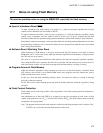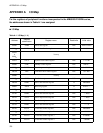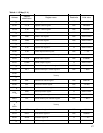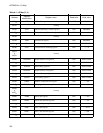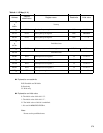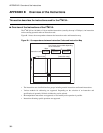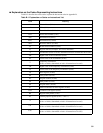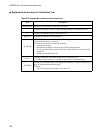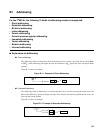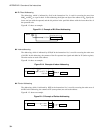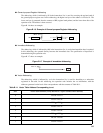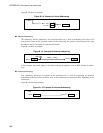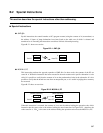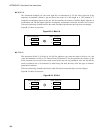
381
■
Explanation on the Codes Representing Instructions
Table B-1 describes the codes used to explain the instruction codes in Appendix B.
Table B-1 Explanation on Codes on Instructions’ List
Code Meaning
dir Direct address (8 bits)
off Offset (8 bits)
ext Extended address (16 bits)
#vct Vector table number (3 bits)
#d8 Immediate data (8 bits)
#d16 Immediate data (16 bits)
dir:b Bit direct address (8:3 bits)
rel Branch relative address (8 bits)
@ Register indirect (Example: @A, @IX, and @EP)
A Accumulator (8 bits or 16 bits, determined on basis of instruction to be used)
AH Higher 8 bits of the accumulator (8 bits)
AL Lower 8 bits of the accumulator (8 bits)
T
Temporary accumulator
(8 bits or 16 bits, determined on basis of instruction to be used)
TH Higher 8 bits of the temporary accumulator (8 bits)
TL Lower 8 bits of the temporary accumulator (8 bits)
IX Index register (16 bits)
EP Extra pointer (16 bits)
PC Program counter (16 bits)
SP Stack pointer (16 bits)
PS Program status (16 bits)
dr Either accumulator or index register (16 bits)
CCR Condition code register (8 bits)
RP Register bank pointer (5 bits)
Ri General-purpose register (8 bits, i = 0 to 7)
X
Indicates that X itself is the immediate data.
(8 bits or 16 bits, determined on basis of instruction to be used)
(X)
Indicates that the contents of X is the accessing subject.
(8 bits or 16 bits, determined on basis of instruction to be used)
((X))
Indicates that the address specified in X is the accessing subject.
(8 bits or 16 bits, determined on basis of instruction to be used)



